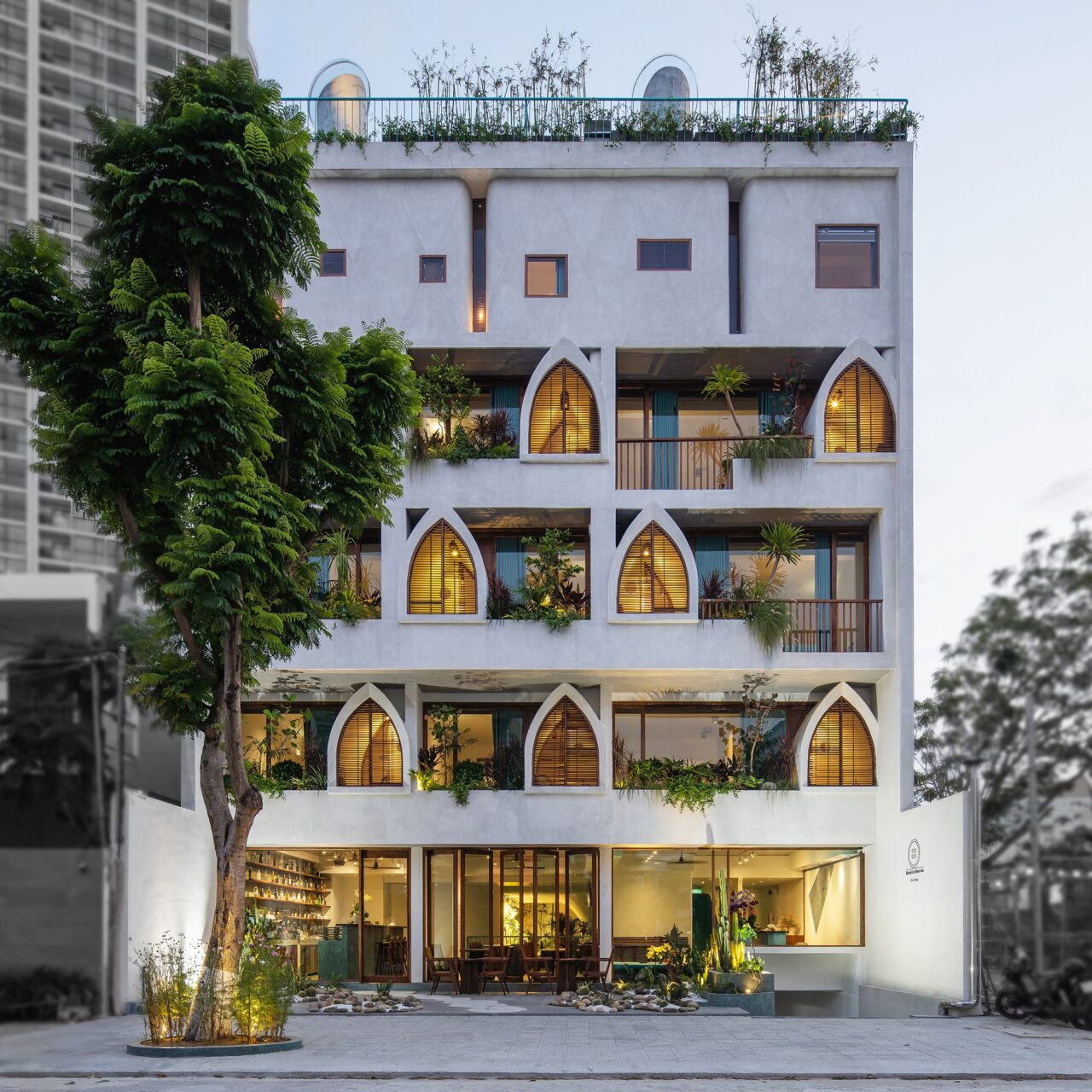Platinum Winner of the International Architecture & Design Awards 2022
Architect / Designer:
Linh Nguyen
Studio:
D1 architectural studio
Design Team:
Tan Nguyen, Linh Nguyen, Mi Sa Do, Nhut Bui
Copyright:
Photographer: Quang Dam
Country:
Viet Nam
The Hotel Le Bouton had previously been suspended after one year in construction, as the client wishes to avoid the path of modern hotels that are built for commercial use without long term consideration of sustainability. Upon receiving the commission, D1 Architectural Studio committed to place guest experience at the center.
Humans are born biophilic, according to American biologist Edward O Wilson (1984). Being near nature makes us happy, while being distanced from it decreases our health and wellbeing. And hotels, where people run to for a brief moment of sanctuary in order to recuperate, need to incorporate green spaces first and foremost. But how can we “go green” without making the design too bushy that it compromises the beauty of the hotel? Relying on ancient wisdom to answer modern architectural problems, the architects took various site checks to Hoian in order to find references in how ancient Hoianese has created spaces that welcome nature to come and live with the inhabitants. Traditional houses in Hoi An always have a yard, a pond, a miniature bonsai to invite the sunlight into the space. In this way, Hoianeses ensured the harmony between living space and nature. D1’s architects brought this idea into the design.
The hotel makes space for a miniature sand garden, filled with natural sand from the beach, and the dry garden on the terrace. In the basement lies Le Bouton’s unique offer: a hot mineral pool modeled after a cave with a natural stream, gushing from a steep limestone cliff. The architects placed the pool in the basement and empty the spaces separating the building with the surrounding walls to create the buffer zone for air to flow into the building, enter the basement, absorb the mist from the pool and disseminate it across the floors, through the skylight at the heart of the building. The skylight does not only function to expand the view, take in natural light and circulate air flows, but also connect spaces together.
To solve the challenges that comes from the tempestuous weather of Central Vietnam, D1 Architectural Studio worked with artisans from local craft villages – Non Nuoc Stone Carving Village and wood handicraft villages – to select durable materials that are capable of withstanding the harsh climate of the central region, while still entertaining architects’ creativity, permit negligible construction deviations, and above all, environmental friendly.
For the finish, D1 Architectural Studio used pebble wash and exposed aggregate sourcing from the nearby crafting village. This locally available material is cost efficient, easy to maintain, yet strong enough to endure the scorching sun. Wooden furniture and whetstone are also used extensively in interior design. The artisans cleverly integrated local materials to breathe the sense of local intimacy into each design elements. The vertical direction of the building is also calculated carefully to take advantage of natural wind and thereby limit the use of air conditioning.


